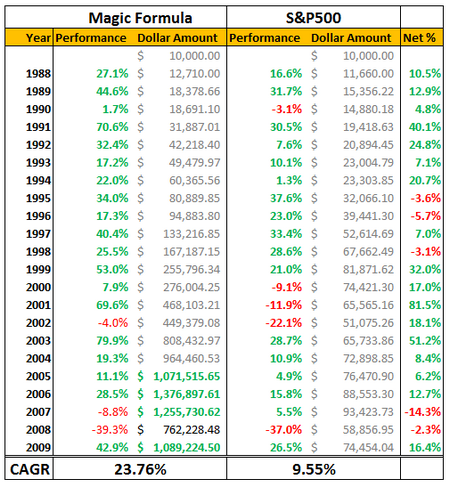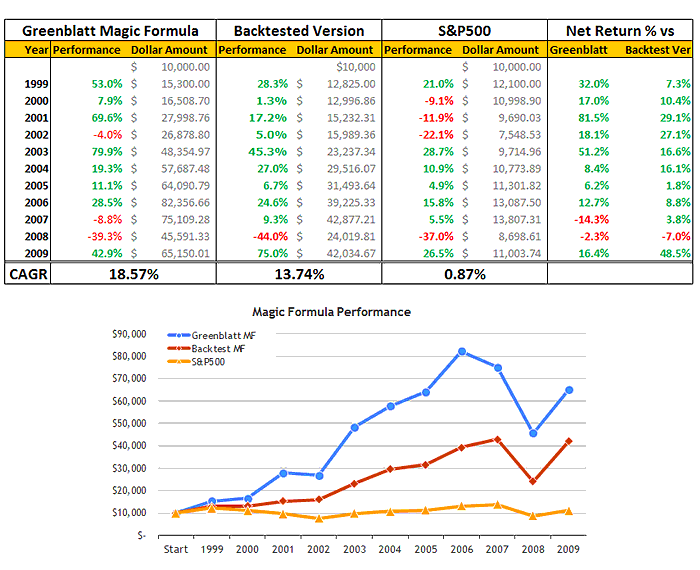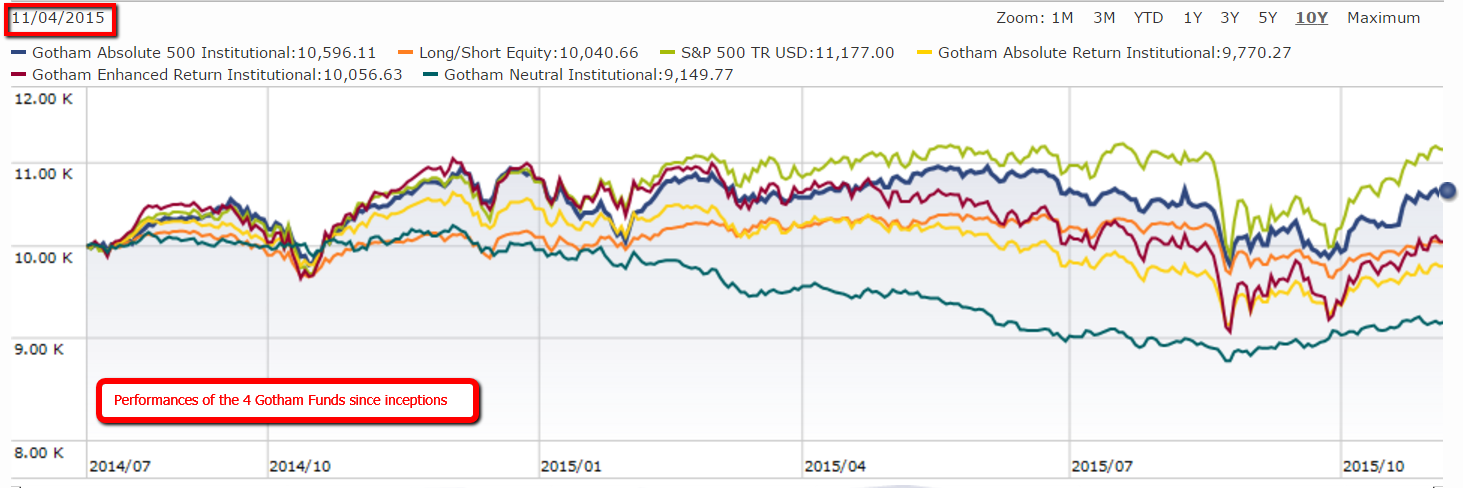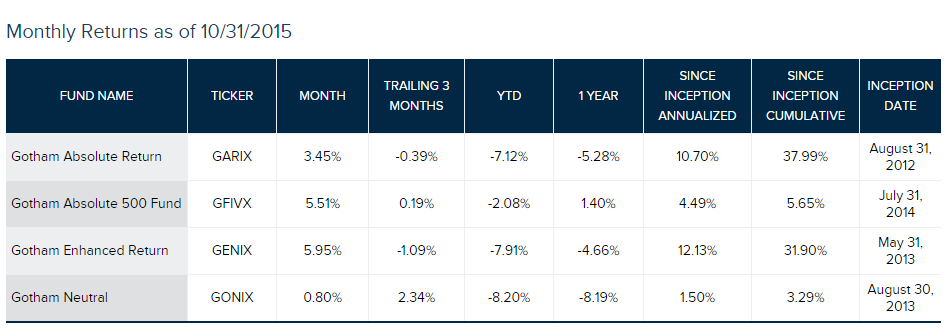Joel Greenblatt – The Magic Superinvestor - Lanber
Tan KW
Publish date: Fri, 06 Nov 2015, 04:56 PM
We are starting a series profiling superinvestors that have made a big impact in the value investing world.
Isaac Newton once said that “If I have seen further than others, it is by standing upon the shoulders of giants.” I hope that through this series you’ll discover new superinvestors to learn from in order to further sharpen your own thinking.
Up first is Joel Greenblatt. He doesn’t need much of an introduction.
The mastermind behind the simple and effective magic formula, holder of one of the best 10 year investment records at 40-50% CAGR.
Considering that Greenblatt describes himself as self-taught in the ways of value investing after reading Graham’s quant based investing strategies, his results are even more impressive. Then throw in some additional accolades like being an adjunct professor at Columbia University and being classified as a superinvestors at such a young age.
We know all about the magic formula, but investors don’t really know much about Greenblatt himself of Gotham funds.
Let’s dive into some details and get to know Greenblatt a little better.
Lessons Joel Greenblatt After Gambling Money in a Dog Race
When Joel Greenblatt was 15 he had the chance to make some bets in a dog racing circuit.
He was confident in a dog named Lucky which had a 99-1 chance of winning. He was a sure bet because he was fast in all the previous races.
But Lucky was unlucky and lost.
However, Greenblatt realized that Lucky performed best in short races and this story provides a glimpse into Greenblatt’s mechanical approach to investing.
At 15 years old Joel took this lesson to heart. Betting with just a good story and not knowing the facts will only cost money.
He argued that if you don’t know the fundamentals you will lose. This follows closely Graham’s philosophy of value investing.
- Do your own work
- Don’t trust anyone over 30
- Don’t trust anyone 30 or under
As an educator and a strong advocate of learning, Greenblatt believes in being open-minded to new ideas. He points out that Buffett’s success is due to his unique spin on Graham’s thinking and philosophy.
Joel Greenblatt’s Magic Formula Approach – Keep it Simple
In his book, The Little Book that Beats the Market, Greenblatt explains his magic formula method on how to buy mispriced stocks with top earnings yield and high ROIC.
The idea of the magic formula is to provide
A long-term investment strategy designed to help investors buy a group of above-average companies but only when they are available at below-average prices.
If I plug my estimates into the Magic Formula, and it comes out cheap, that’s good.
Joel Greenblatt’s magic formula was previously tested on old school value with a heavy dose of skepticism, but numbers don’t lie. See for yourself.
The original magic formula numbers first.

And old school value’s variation of the magic formula compared with the original and the market.

It’s not the 30% claimed in the book or the 18.57% return. However, the old school variation produced a 13.74% CAGR which easily beats the market return of 0.9% over the same period.
How Long Will the Magic Formula Work?
There’s been a lot of discussion about whether the magic formula has lost its touch. The argument is that because the book became a best seller, more people know about it and it is now a crowded strategy now.
But when you consider that value investing itself isn’t popular with mainstream investing and the magic formula is just a subset of value investing, there is plenty of room before it ever gets crowded.
Even if the magic formula has lost some of its glimmer, the truth is that no investing strategy will work 100% of the time.
Investors need to believe in their system even if it’s not working in the short term. “Short term” isn’t 1-6 months. As of today, Gotham funds have been underperforming the market for a few years, but it’s still too short to claim whether a system is working or not. Especially when the system has been proven before and backtested evidence shows that it works.


Greenblatt believes that consistency is key to his fund’s success and if you look at the quotes section below, you’ll notice his emphasis on sticking with the long term and not getting pushed out of a strategy due to short term underperformance.
Investment Strategies of Joel Greenblatt
Joel Greenblatt isn’t just known for the magic formula. He is likely the one that really brought special situations to value investors. Sure Buffett wrote about workouts in his letters before Greenblatt even got started, but when it comes to teaching about special situations, Greenblatt is the best.
Most value investors have read his special situation book, You Can be a Stock Market Genius.
In fact, you can download and read notes to Greenblatt’s Columbia Business School special situation class from a decade ago thanks to John Chow from CS Investing who was the auditor of his lectures.
Also, here’s another good link that provides notes to a 2006 lecture from Greenblatt’s value investing class video going over some of his previous stocks.
Now when selling stocks, Joel Greenblatt takes the same objective and simple approach.
Consistency is key right?
I usually try to sell before my investment reaches a conservative estimate of fair value. In other words, I usually sell too early. In addition, I may sell before an investment reaches even that discount to conservative fair value if I find something else a lot cheaper and it makes sense to make the exchange after looking at my overall portfolio.
This quote ties in very much with the magic formula where stocks are sold after one year.
Joel Greenblatt Famous Quotes

Here is part of the tradeoff with diversification. You must be diversified enough to survive bad times or bad luck so that skill and good process can have the chance to pay off over the long term.
Many studies over the years have confirmed that value-oriented strategies beat the market over longer time horizons. Several different measures of value have been shown to work. These strategies include, but are not limited to, selecting stocks based upon low ratios of price to book value, price to earnings, price to cashflow, price to dividends… these simple value strategies do not always work. However, measured over longer periods, they do. Though these strategies have been well documented over many years, most individual and professional investors do not have the patience to use them. Apparently the periods of underperformance makes them difficult – and, for some professionals, impractical to implement.
If your goal is to beat the market, an MBA or a Ph.D. from a top business school will be of virtually no help.
If you spend your energies looking for and analyzing situations not closely followed by other informed investors, your chance of finding bargains greatly increases.
Look down, not up, when making your initial investment decision. If you don’t lose money, most of the remaining alternatives are good ones.
There’s a virtuous cycle when people have to defend challenges to their ideas. Any gaps in thinking or analysis become clear pretty quickly when smart people ask good, logical questions. You can’t be a good value investor without being an independent thinker – you’re seeing valuations that the market is not appreciating. But it’s critical that you understand why the market isn’t seeing the value you do. The back and forth that goes on in the investment process helps you get at that.
You do have to do your homework.
You do have to have the right framework.
You have to screw up a bunch and learn from it.
Each mistake leads to better insights and subtleties.
I think business school is a very personal decision. I love Columbia and I think they have a great value investing program but there is nothing that is taught there that you can’t learn on your own. Becoming a good investor is about reading, learning and practicing and then practicing some more.
Where to Find Magic Formula Stocks and Greenblatt Inspired Stocks
- The official magic formula stock screener
- Value Investors Club operated by Greenblatt – sign up for free
- Magic formula screen at old school value
- Magic Diligence stock newsletter
Must Read Books by Joel Greenblatt for ALL Value Investors
Other Joel Greenblatt Dedicated Resource Pages
More articles on OldSchool.com - Jae Jun
Created by Tan KW | Oct 23, 2018
Created by Tan KW | Jun 14, 2018
Created by Tan KW | Apr 20, 2018























